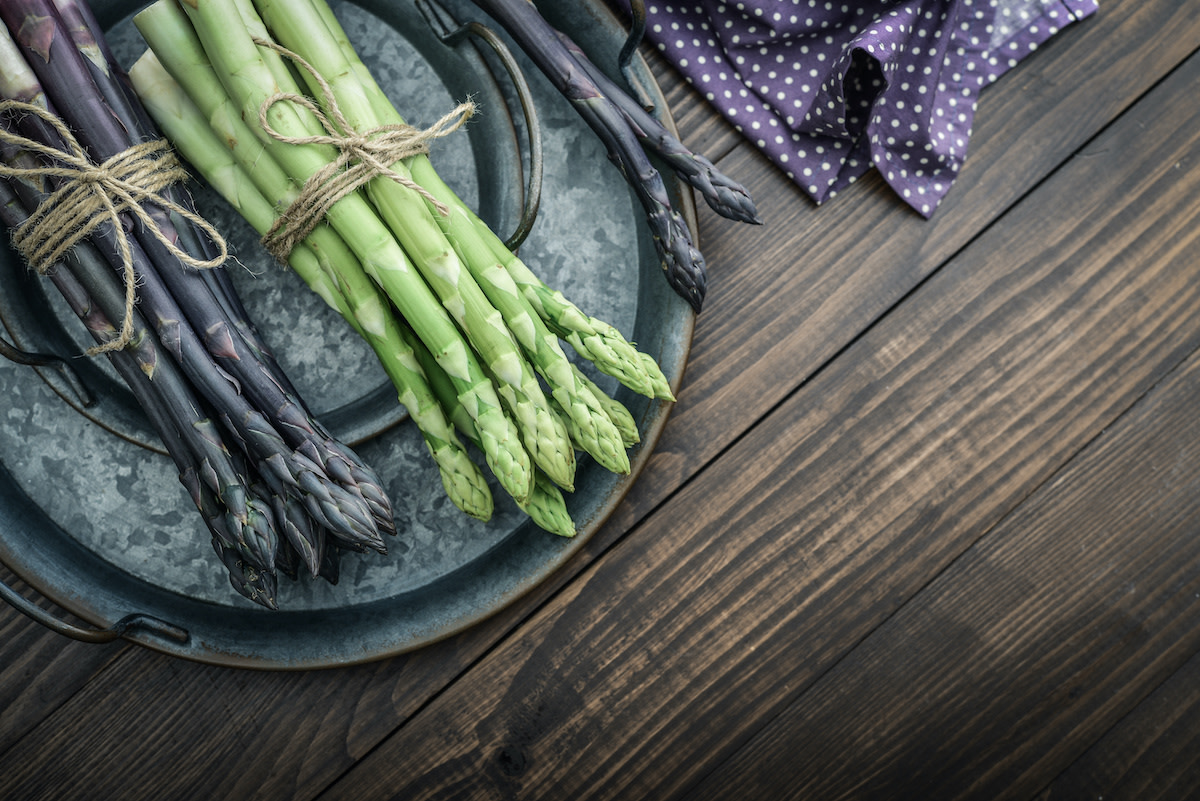Types of Asparagus: 6 Popular Asparagus Varieties
Written by MasterClass
Last updated: Aug 10, 2021 • 3 min read
Asparagus is a perennial plant, and its edible young shoots can be cultivated to be green, white, or purple. Learn more about common types of asparagus and their nutritional value.
Learn From the Best
What Is Asparagus?
Asparagus is the common name for Asparagus officinalis L., a perennial flowering plant best known for its edible young shoots. Once classified as part of the lily family (Liliaceae), asparagus plants have since been reclassified to belong in the angiosperm family Asparagaceae. Sometimes referred to as “sparrow grass,” asparagus grows naturally in sandy soils and temperate, Mediterranean climates. Cultivated asparagus today grows in regions as far north as Germany and as far south as New Zealand and Peru.
Fully grown, asparagus plants can reach up to seven feet in height and resemble ferns. Some asparagus ferns (differentiated by their scientific name, Asparagus setaceus) are grown specifically to be ornamental while others grow like weeds in parts of Australia. Human consumption of wild asparagus and garden asparagus dates back thousands of years. Growing asparagus beds at home is relatively easy, but new plants need time to develop their root systems in their first year before you can harvest the veggies.
Asparagus Nutrition Facts
Asparagus is a nutritious vegetable rich in folate, potassium, and vitamins C, A, and K. Asparagus contains relatively large amounts of the amino acid asparagine, which gets its name from the vegetable.
Male vs. Female Asparagus: What’s the Difference?
Asparagus is a dioecious plant species, meaning that it has both male and female plants. Generally, the female plants produce seeds that the males pollinate:
- Male: Male asparagus plants generally produce longer and thicker asparagus spears. Their flowers are also larger and longer. They have six stamens and one pistil.
- Female: Female asparagus plants are generally smaller. They have flowers with six pistils and three-lobed stamens. Their pollinated seeds develop into small red berries.
Hermaphrodite asparagus are male plants with female organs that have been found to self-pollinate.
3 Types of Asparagus
Asparagus are typically categorized by the color of their spears.
- Green: The type you’re most likely to find at your local grocery store, green asparagus tend to be thinner than other types of asparagus. They get their green color from the chlorophyll necessary for photosynthesis.
- White: White asparagus lack color because they are grown in the dark, preventing photosynthesis. Despite the color difference, white asparagus taste similar to green asparagus.
- Purple: Known to be the sweetest type, purple asparagus gets its color from high levels of anthocyanins, chemical compounds commonly found in vegetables and other plants. Purple asparagus tend to lose their color when exposed to heat, so consider grilling or blanching them quickly to preserve their color and reach optimal tenderness.
6 Popular Asparagus Varieties
Different varieties of asparagus are typically identified by the color of the asparagus crowns. Explore these popular asparagus varieties.
- 1. Precoce D’Argenteuil: Popular in Europe, this pale green heirloom variety has rosy pink tips. The plant itself can grow up to three feet tall. Sweet to the taste, these asparagus are tender when cooked.
- 2. ‘Purple Passion’: Purple Passion asparagus is a popular variety of purple asparagus. They become a lighter green when cooked but are often identified by their purple spears and leaf-like bracts. They are great for freezing and have a distinctly nutty taste. They are one of the most tender asparagus varieties, making them great for salads.
- 3. ‘Jersey Giant’: A hybrid asparagus, ‘Jersey Giant’ is just one cultivar in the Jersey Series of asparagus. Others in the series include the ‘Jersey Knight’ and ‘Jersey Supreme’ cultivars, which were bred to be meaty and disease-resistant. They are particularly resistant to fusarium, a type of fungus. The ‘Jersey Giant’ hybrid variety of asparagus grows quite well in most climates, and as the name suggests, the edible part of the plant can grow up to nine inches long.
- 4. ‘Mary Washington’: Part of the Washington Series of asparagus alongside the ‘Martha Washington’ cultivar, ‘Mary Washington’ is the most popular green asparagus among North American growers. They grow long, uniformly thick green spears when planted in full or partial sun.
- 5. ‘Apollo’: These large, crisp, early bloomers grow to be dark green with purple tips. They grow well in warm and cool climates and are resistant to asparagus rust and other diseases. Much like ‘Purple Passion,’ ‘Apollo’ asparagus tend to have thicker spears that are great for freezing.
- 6. ‘Atlas’: This type of asparagus is resistant to disease and grows best in hot climates. A high-yield crop, ‘Atlas’ asparagus are sturdy and frost-tolerant.
Learn More
Grow your own garden with Ron Finley, the self-described "Gangster Gardener." Get the MasterClass Annual Membership and learn how to cultivate fresh herbs and vegetables, keep your house plants alive, and use compost to make your community—and the world—a better place.
